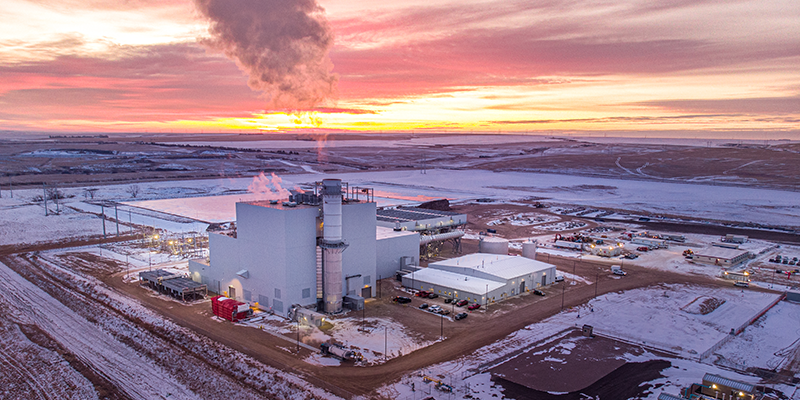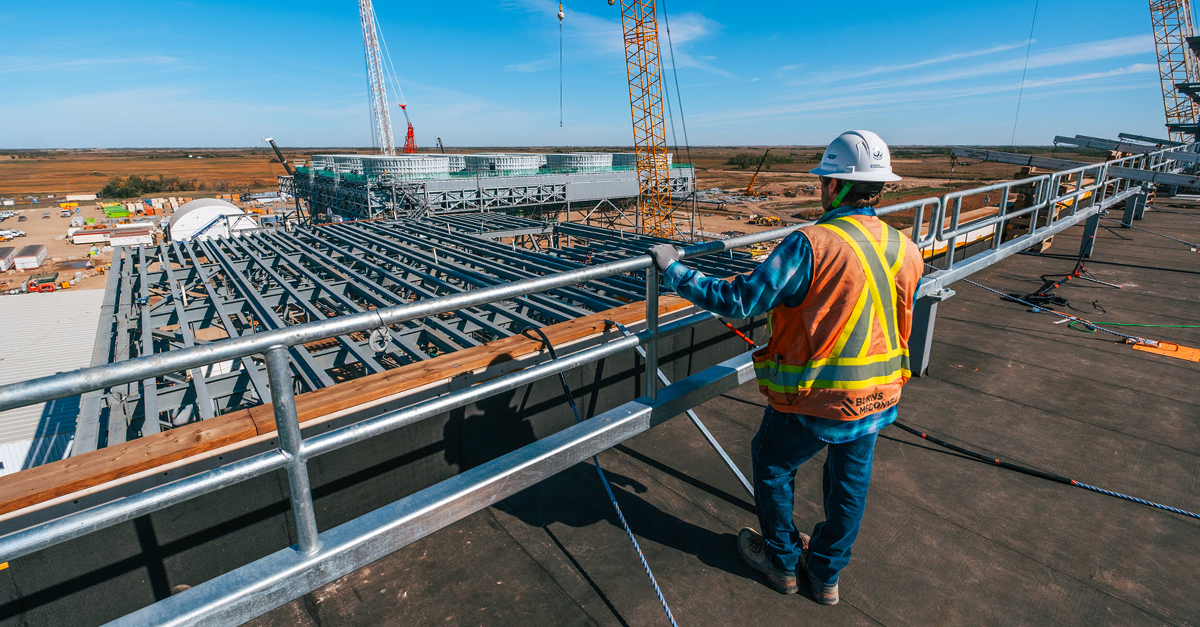The Need for Natural Gas
April 12, 2024

This month we broke ground on a new natural gas facility near Lanigan. The Aspen Power Station will be capable of providing 370 megawatts (MW) of power. That’s enough to power equal to about 370,000 Saskatchewan homes. The power station will be a peaking facility. That means we’ll mostly use it when the demand for power spikes or when there’s a shortfall of power because renewables like wind and solar aren’t producing enough power to meet the province’s needs.
We’re moving to a net-zero greenhouse gas (GHG) emissions power system. So, you might wonder how a new natural gas facility fits into that future. We sat down with Nanette Salamon, Manager of Supply Planning, to learn more.
Why is SaskPower Building a New Natural Gas Power Station?
There are 2 reasons why we need more natural gas power:
- There’s an increasing demand for power.
- We need to phase out conventional coal due to federal regulations.
That means we need more sources of reliable power. Right now, natural gas is the only dispatchable supply option that we can develop at the scale and size we need to power the province. Dispatchable means the power is always available when we need it.
There are some emerging technologies that can provide dispatchable power without GHG emissions. But they aren’t available for commercial use yet and we need more time for that to happen. In the meantime, natural gas generation provides the power we need to keep the lights on in Saskatchewan.
Can’t You Use Wind and Solar Power to Replace Coal?
No. Wind and solar have many strengths but reliability isn’t one of them. We need power that’s always available when we need it. But having natural gas in our supply mix will allow us to bring more renewable generation online.
That’s because power must be used in real time and natural gas generation is very fast acting. So, on the days when wind is high, we won’t run natural gas facilities as much. But when it’s not windy or sunny, natural gas generation can quickly take their place.
So, How Are You Reducing GHG Emissions?
We’re on track to reach net-zero GHG emissions by 2050 or earlier. To help get there we’re:
- Adding up to 3,000 MW of wind and solar generation by 2035.
- Retiring conventional coal by 2030 as required by federal regulations.
- Using natural gas to back up non-emitting options like wind and solar. (Natural gas produces about 50% fewer GHG emissions than conventional coal.)
- Investigating new technologies like energy storage, nuclear power from small modular reactors, carbon capture and storage (CCS) on natural gas, and others.
Will You be Allowed to Use Natural Gas if the Draft Clean Electricity Regulations (CER) Become Law?
The CER regulations will impact how we operate our natural gas facilities. Right now, we’re working to help the Federal government understand how they would impact Saskatchewan. And revisions to the regulations are under consideration. If they pass as currently drafted, it will mean:
- Our natural gas units commissioned before 2025, like the Chinook Power Station and Great Plains Power Station, can run unabated (that means without CCS technology) for 20 years from when they were commissioned.
- New natural gas units commissioned after 2025, like the Aspen Power Station, will have to be retrofitted with CCS technology or shift operation so they’re only used when we absolutely need it.
- More generation would be required to ensure system reliability.
No matter how the CER regulations impact future operations, we need the Aspen Power Station to deliver reliable, cost-effective and sustainable power for Saskatchewan.
Learn More:




